‘An image comes to mind of a white, ideal space that, more than any single picture, may be the archetypal image of 20th-century art.’ Brian O’Doherty coined his now famous description of the white cube in a series of essays in 1976, highlighting the often unarticulated context that he argued was a determining factor in the way that many modern artists made their work. Put most simply, many of them made paintings imagining the way they would be hung: on white walls, with generous space around them, evenly lit and with wooden or neutral flooring beneath them. The white cube delimited what would come to be accepted as canonical modernism. Despite O’Doherty’s debunking of this context, the white cube mode of exhibiting continues to underpin much exhibition-making in the West, from commercial galleries that are designed to look like modern art museums (think of David Zwirner’s minimalist 30,000 square foot space on 20th Street in New York) to websites such as Contemporary Art Daily that tend to privilege the flattened picture surfaces of post-minimalist paintings, which look good filtered through the even light of a laptop screen.
Elsewhere however, the white cube might not be seen as the dominating context that it is in the West. In fact, one could contend that artists working in some of the fastest growing regions of contemporary art production are responding to an entirely different exhibition framework, which has as much of an effect on the objects being made as the white cube had in western centres of art production like New York and London in the 20th century. For if artists in the West were making work that would look best in the clean spaces of the modern art museum, over the last 20 years Asian artists have largely been responding to a different context, that of biennials. And arguably this has resulted in work that tends towards the type of art that biennials, with their limited runs and non-conventional locations, favour – installation, film and performance.
These disciplines have their roots in an international tendency in the 1950s and ’60s to move beyond the traditional media of modern art; art historians have termed them ‘neo-avant-garde’ to differentiate them from pre-war avant-garde practice. If modernism favoured the white walls of institutions, the neo-avant-garde sought to situate itself beyond those walls in temporary and irregular spaces. A significant number of artists in Asia took to such practices with gusto through the late 1980s and ’90s, which may well have had less to do with rejecting a modernist paradigm (as it had been with the neo-avant-garde) and more to do with a proliferation of exhibiting conditions that favoured new media – that is, the space of the biennial.
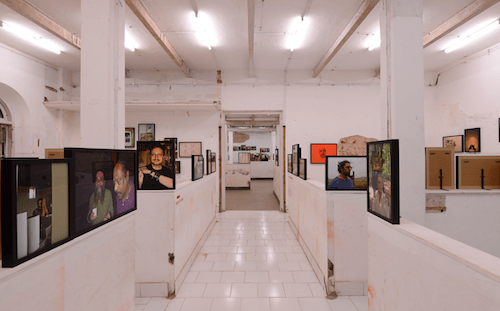
Installation view of Atul Dodiya’s ‘Celebration in the Laboratory’ at Kochi-Muziris Biennale, 2014. Image courtesy Kochi Biennale Foundation. Photo: Dheeraj Thakur
In the absence of an established museum structure, biennials became a key space for Asian artists to gain critical and curatorial validation. The three key exhibitions that set the template for the Asian biennial
were the Gwangju Biennale in South Korea (established 1995), the Fukuoka Triennale in Japan (1999) and the Asia Pacific Triennial of Contemporary Art, in Queensland, Australia (1993). Curated by Yongwoo Lee, the first edition of the Gwangju Biennale (then Kwangju International Biennale) was the largest international exhibition in Asia at the time, and featured 23 Asian artists (including the peripatetic Thai artist Rirkrit Tiravanija within that designation). They included Woo Jae Gil, whose theatrical installation Sound of the Day used music and soundbites from the Kwangju Massacre of 1980; Lee Wen who showed the installation and performance work Journey of a Yellow Man No.5: Index to Freedom, and Toshihiro Kuno, who exhibited Untitled 1991 – August, made from sandbags, wood, rusted wire and lightbulbs. Meanwhile Tiravanija showed one of the tasty dinner pieces (in which viewers become participants as a meal is served to them), with which he was making his name as a central figure in Relational Aesthetics. Among the Western artists were Maurizio Cattelan, Douglas Gordon, Carsten Höller, Ernesto Neto and Gabriel Orozco.
Click here to buy the November issue of Apollo
The exhibition did three things: firstly, like other subsequent Asian biennials, it contributed to the ‘normalisation’ of installation: film, video and performance becoming the dominant strand of contem-porary art, with curatorial validation and the exhibition opportunities that came with the emerging biennial circuit. Secondly it introduced Asian artists to an international network of artists such as Gordon, Höller
and Neto, whose works embraced installation, film and performance. Finally it continued the progress initiated by the Asia Pacific Triennial in mapping the geographic bounds of Asian contemporary art. For these were not exhibitions that surveyed an existing arena of ‘Asian contemporary art’, but to an extent created that category: encompassing South Asia, East Asia, North Asia, Southeast Asia and even Australia. It was not necessarily a term that practitioners in these regions would have recognised before the advent of these Biennials. Artists from very different localities were not only beginning to be grouped together through grand curatorial gestures, but through a particular way of making art.
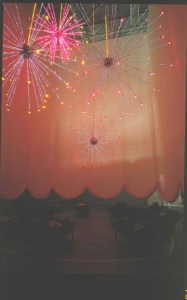
Installation view of Cai Guo-Qiang’s ‘Fireworks from Heaven’ at Yokohama International Triennale of Contemporary Art, Japan, 2001. Photo: Kazuo Ono, courtesy Cai Studio
In response to the success of these three major exhibitions, and the desire of national and local governments to signify their own status as international hubs, biennials and triennials mushroomed across Asia from the mid-1990s onwards. These included the Shanghai Biennale (1996), the Taipei Biennial (the international version, succeeding a local exhibition, launched in 1998), the Yokohama Triennale (2001), the Chengdu Biennale (2001), the Nanjing Triennial (launched as the Triennial of Chinese Arts in 2002), Guangzhou Triennial (2002), the Beijing International Art Biennale (2003), the Singapore Biennale (2006), the Colombo Art Biennale (2009) and the Kochi-Muziris Biennale (2012). Many displayed a mixture of Asian artists using installation, film and performance, alongside figures from the western biennial circuit. The first edition of the Yokohama Triennale, for example, featured Tsubaki Noboru and Muroi Hisashi’s suspended giant grasshopper The Insect World/Locust that was hung outside Yokohama’s Grand Intercontinental Hotel; Anita Dube’s sombre installation His Master’s Voice, which meditated on India’s modern history through its array of furniture covered in a thick layer of dusk, and Cai Guo-Qiang’s Fireworks from Heaven, which featured reclining massage chairs from which viewers gazed on a display of artificial fireworks. Regulars from the western biennial circuit included a Félix González-Torres installation of wrapped sweets, a Fiona Tan film and a William Kentridge animation. The second edition (held in 2005) featured works such as Chen Zhen’s Purification Room, in which the artist covered a space and its assorted objects with earth to form a petrified field, and Mella Jaarsma’s architectural, decorative shelters that looked like shrines and totems and fitted snugly around the human body while offering protection from the elements.
The foregrounding of installation, film and performance, mixed with the presence of names familiar from western biennial circuits points to one thing: the class of curators who have become associated with biennials, and with criss-crossing the globe. This year’s Gwangju Biennale was curated by Jessica Morgan, who has been leading Tate Modern’s foray into international contemporary art over recent years. Meanwhile Nicolas Bourriaud, the poster boy of Relational Aesthetics, has recently opened his edition of the Taipei Biennial (until 4 January 2015). Most Asian Biennials that were founded in the 1990s have used a judicious mixture of such high-profile western curators interspersed with Asian curators, sometimes working in teams, possibly to avoid accusations of the neo-colonial gaze. However, there is no doubt that the presence of these leading western-based curators has brought institutional validation in countries that lack strong public museums or critical infrastructure devoted to contemporary art – Okwui Enwezor, Massimiliano Gioni, Charles Esche and Hou Hanru have all had a hand in editions of the Gwangju Biennale, for instance.
On one level it is easy to be sceptical about that roll-call of the frequent-flyer curators, and the type of ‘biennial art’ produced by favoured artists – Cattelan, Neto, Kentridge et al. This scepticism can extend to the issue-based art that draws on ideas from post-colonialism, feminism, post-structuralism and political history, an assortment of which often inform the content of much of the installation, film and performance work that features in biennials in Asia and the rest of the world. Yet such scepticism ignores the fact that the promotion of such work through the critically validated spaces of the biennial acts as a buffer to the other obvious way of appropriating new art made in Asia – that is, the market. In the absence of a strong museum culture, biennials have played a quasi-institutional role in ensuring that art can be valued, viewed and debated in terms other than financial.
From this point of view, it is a positive thing there are few signs of Asian biennials moving on from privileging installation, film and performance, or indeed the neo-avant-garde emphasis on process rather than finished object. The first Kochi-Muziris Biennale in 2012 included a number of installations such as Subodh Gupta’s large, untitled wooden boat containing a multitude of domestic objects, and film-based works such as Amar Kanwar’s The Sovereign Forest, which comprises film, rice seeds and a series of books in order to explore the social impact of the mining industry in Odisha.
The Biennale itself was presented in a series of crumbling buildings across the Indian port city of Kochi (situated near the lost ancient port of Muziris), which were in a number of cases as far from the white cube model as possibly could be. And due to various teething problems, the exhibition was not fully installed in time for the opening, leading the critic Amanprit Sandhu to argue that ‘The exhibition as a visible work in progress – a literal site of production – came to be an integral part of the Kochi-Muziris experience.’ In effect, the Kochi-Muziris Biennale inadvertently presented a view of contemporary art that embodied a central tenet of the neo-avant-garde: that process was to be prized rather than the finished object.
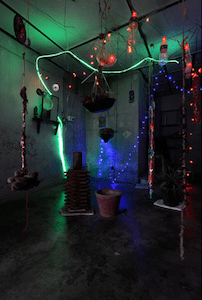
Installation view of Dylan Martorell’s ‘Soundtracks-Kochi’ at the Kochi-Muziris Biennale, 2014. Image courtesy Kochi Biennale Foundation. Photo: Dheeraj Thakur
In the Indian context, this is somewhat ironic. For unlike some of the locales where Asian biennials were launched in the 1990s, the Kochi-Muziris Biennale happened in the context of an Indian contemporary art world that had enjoyed a dramatic commercial boom in the first decade of the 21st century before levelling off from 2008. That boom was driven by a commercial gallery scene and auction-houses less interested in practices drawn from the neo-avant-garde, but instead in the type of works that grace white cube spaces – in particular, large paintings that were shifted profitably at auction. Jeebesh Bagchi of Raqs Media Collective – one of Indian contemporary art’s more conceptually orientated artists – sees the new biennial as the beginning of a way out of the previously market-orientated scene: ‘Most of the artists here primarily show work within domestic circuits in the confines of the white cube. But with mounting goodwill around the Kochi-Muziris Biennale, there will be more conceptual- and art practice-lead pressure on the prevalence of that white cube frame in the coming years.’
Philip Tinari, director of the Ullens Center for Contemporary Art in Beijing, concurs with Bagchi’s view of the pull of the market – perhaps no surprise, given that the boom in Chinese contemporary art outstrips anything seen in India. For Tinari, the lack of a developed institutional infrastructure ‘has skewed production – there is quite a great deal of work being made in various Asian countries that is validated primarily by market success and collector taste, rather than critical or curatorial acclaim. The biennials in this context are one of the better parts of the system.’ Tinari’s observation is particularly relevant now, with the rise of private museums in Asia offering another arena that is driven by collector-validation, and which might indeed signal a shift towards the production and exhibition of works more suited to the white cube model. But it is arguable that without the presence of Asian biennials, the art market, and primarily the auction houses, would have been the key reference point for most emerging artists. As it is, such events offer a space for making art that resists easy commodification. If curators and biennials are increasingly met with a weary sigh in a western art world that remains insistent on privileging the white cube, they are playing a key role in enabling avant-garde artists to develop in Asia.
Click here to buy the November issue of Apollo
Unlimited access from just $16 every 3 months
Subscribe to get unlimited and exclusive access to the top art stories, interviews and exhibition reviews.

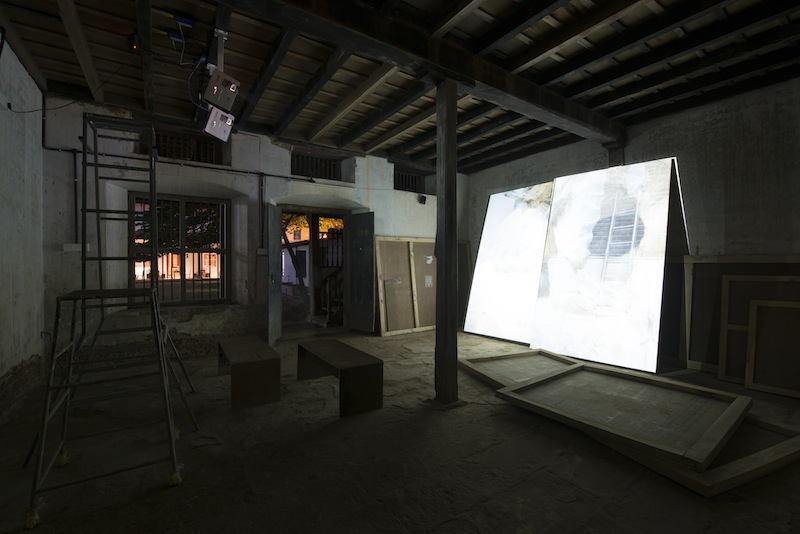
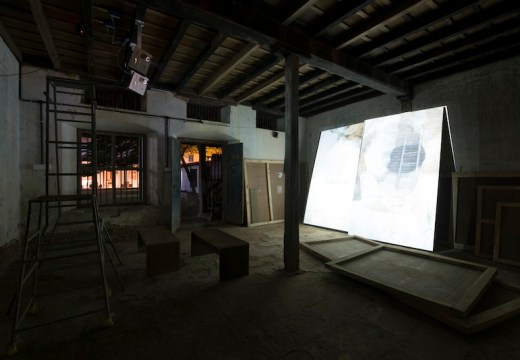
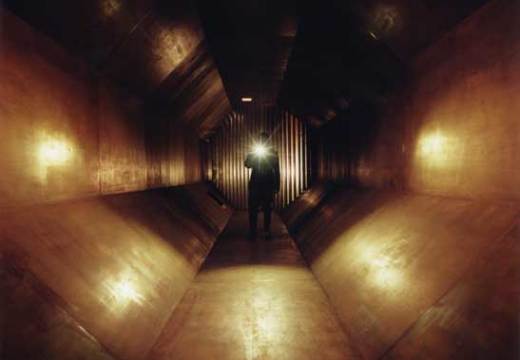










![Masterpiece [Re]discovery 2022. Photo: Ben Fisher Photography, courtesy of Masterpiece London](http://www.apollo-magazine.com/wp-content/uploads/2022/07/MPL2022_4263.jpg)
It’s time for the government of London to return to its rightful home